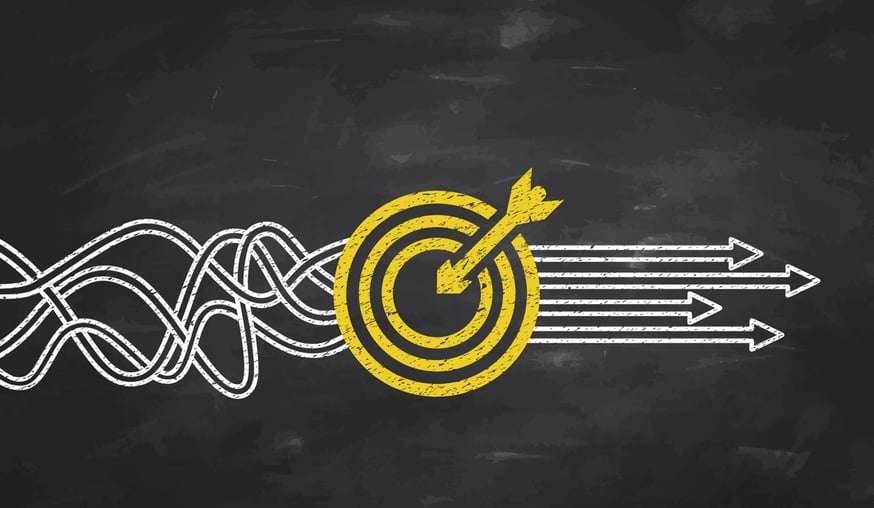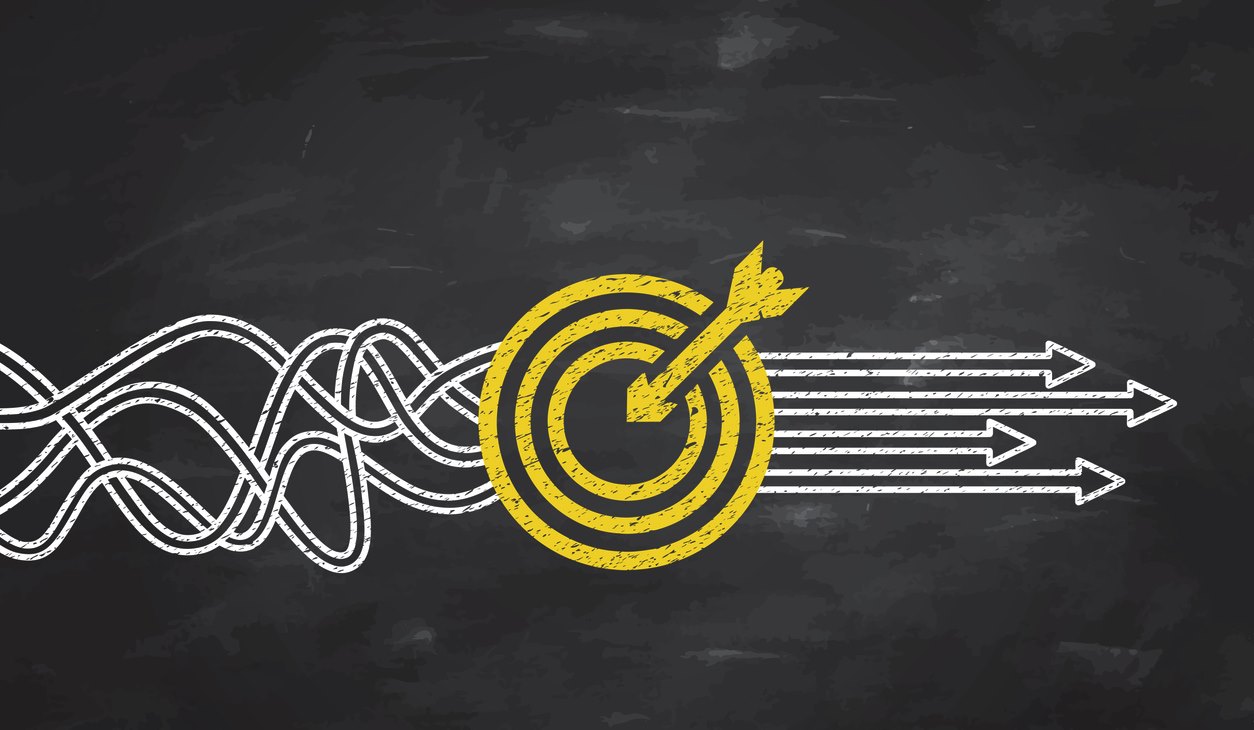Today many organizations want to be data-driven. Why? Because they believe that, by leveraging data, they can increase efficiency, deliver higher revenue and perhaps even find new opportunities. Ultimately, it is about trying to drive higher value for stakeholders.
So how do you determine the best approach and then deliver on it?
I am excited to present the first installment in a series on delivering sustainable value through data. I will start by providing a straightforward framework and approach on how to understand where you are and how to deliver value today and in the future. In future installments, I’ll also show you how to leverage your existing investments and how to evaluate and upgrade your tools, processes and people.
One challenge for many organizations is the inconsistency in their data maturity. Often there are pockets where investments have been made and the maturity and value has increased. A good example is a group of data scientists who quickly find insights in the data. However, many times these success stories raise the expectations for the rest of the organization, which may not have the understanding or capability to be able to deliver similar results.
The approach and framework laid out in this series of articles will help you define a vision for your organization’s data, and reconcile the vision with where you are today. We will build a strategy and roadmap that incorporate your business priorities and allows for your constraints, while continually driving to your end state vision.
Seven-part framework for becoming data-driven
1. Vision – Why do we need data to support our overall strategy?
First, recognize that not all data is the same. Some will be extremely important to your organization while other data, while it may be interesting, doesn’t hold the same value. To understand the difference, it’s critical to set the Vision for your data based on your organization’s strategic goals, and to establish Why executing upon this vision will enable all individuals to help drive the organization forward.
2. Strategy – How do we achieve the vision?Put in place the core pieces or building blocks to support the vision. Like many strategic efforts, it’s a combination of the different elements working in conjunction with each other that leads to success. There are four core components to the strategy:
People – what skills and experience do we need to execute the strategy and reach the vision?
Process – What new high-level processes (or methodologies) do we need?
Technology – what are the right technologies to reach the vision?
Data – what data do we need from master data, operational data, third party data and the accompanying metadata. What level of quality and how much history? What level of integration and security do we need?
Organizations can struggle in this effort when they focus too heavily on one particular area. Many times, I have seen a methodology or technology selected and leveraged by itself as a game-changing strategy. While technology and methodologies are critical enablers, they need other components – such as change management – to work in unison and achieve an effective strategy.
|
For all the articles in this series, click on this link: |
3. Assessment – Where are we today?
The third step is assessing your current state. Where are you today? This is perhaps the hardest part of the process. While organizations inherently know they have challenges across different areas, documenting them as objective facts can be difficult. I see the most challenges around the people and technology areas due to their emotional or politically charged nature.
The assessment of your data takes quite a bit of effort, but it is a straightforward task since you can quickly determine whether or not the data supports your go forward vision. It is important to assess the entire organization (business and IT) during this process to ensure a complete picture.
Key elements of Assessment:
- People (skills / culture / change / org structure)
- Process – mapping and efficiency
- Technology – Will current platforms support the strategy?
- Data – breadth, depth, quality and security
4. Roadmap – When do we deliver each part of the strategy?
The fourth step is building a roadmap that takes you from How to get to the end state and Where you are today to When to deliver each part of the solution. Hint: When mapping key steps and milestones over time, find true dependencies for each of your building blocks and don’t accept roadblocks based on old ways of working. Sometimes “dependencies” are declared based on old assumptions, past failures or cultural norms. These “dependencies” may no longer be valid and should be removed.
Recognize that business priorities can change over time and constraints may come up after you have put together the roadmap. If you have documented the true dependencies it is very easy to move the different blocks around to meet the new priorities. This is critical so that you do not lose focus on the end state.
Key elements of the Roadmap:
- What are the dependencies?
- Are there “quick wins” you can deliver to show value/ROI?
- What can be done in parallel?
- What are true constraints vs. ones that we have created based on old ways of working?
- Are all stakeholders fully engaged in the road mapping effort? (They should be!)
5. Change Management – Who is this going to impact?
Calling this the fifth step is not entirely accurate because, in reality, it should be integrated into all the other steps. It is Change Management. I put it here as its own section to ensure that prior to implementing the roadmap, a formal change management plan is created.
There is a classic quote I very much like: “the softer side is the harder side.” I’ve seen many technically correct solutions suffer low adoption by users due to education or trust issues. I‘ve also seen critical members of the team leave due to uncertainty or a perceived lessening of their value to the organization. While this generally falls under the people domain, it is a critical aspect that needs to be recognized as such.
Key elements of Change Management:
- Is your culture resistant to change?
- Who are the key influencers in the organization?
- How does this program fit with other changes taking place in the organization?
- Who are your critical stakeholders and champions and are they fully committed and engaged?
6. Implementation – Delivering the data to make better decisions
The sixth step is implementing each strategic block based on the roadmap, with the known dependencies and constraints. Planning is critical since some of the blocks will happen in parallel. Most organizations are fairly adept at securing the right resources and tools. What is different is how you manage the data blocks. Data and the corresponding metadata goes across many, if not all, parts of the organization. Data ownership and education on how data is used, and why, are the keys to success.
Staying focused on the vision and strategy will help answer what data is needed, at what level of quality, and how it integrates with other data. Changing data is one of the more disruptive activities you can undertake. From improving quality (some may disagree with the “improvements”) to changing or adding attributes, hierarchies or granularity, it will impact operations, reporting and analytics. However, the payoff is enormous in that you can give the business what it needs and expects to deliver higher value to the organization.
Key elements of Implementation:
- Plan the work, and work the plan.
- Build the right teams for delivery as well as ongoing operations.
- Leverage the right tools.
- Create the go forward processes.
- Focus on the data to ensure it will completely support the vision.
- Ownership, documentation and communication are critical
7. Sustain – How do we continue to lead in the future?
The last step is sustaining the vision and strategy. This is not “support”, which is inherent within the implementations and ongoing operations. This is about the people side and culture shift to a more mature data organization. While the roadmap and implementation have distinct deliverables and end dates, the maturation of the organization is a true journey. Moving from data-aware to truly data-driven takes time, investment and focus.
Key elements of Sustain:
- Measure the “pulse” of the organization on data-driven decisions.
- Keep all of your information credible and actionable.
- Are we continuing to look at new sources and types of data to help our organization?
- Are there new ways of working or tools that can help enable us?
While some of this framework and approach may seem to be “common sense”, it’s the execution of this process that requires the right amount of knowledge and experience. In subsequent articles, I will explain each step in further detail to help you understand why it’s important, how to approach and execute it, and what the expected outcomes look like.
Stay tuned for future installments in this series, and please feel free to pose questions, feedback, or your own observations using the Comments section below.


Written by Rich Peters
Rich Peters is a seasoned executive with 25+ years of data strategy, business intelligence, and solutions implementation experience across various industries. He is the Founder of Tongere Partners, which helps companies become more successful through the alignment of their data with their business strategy and processes.



